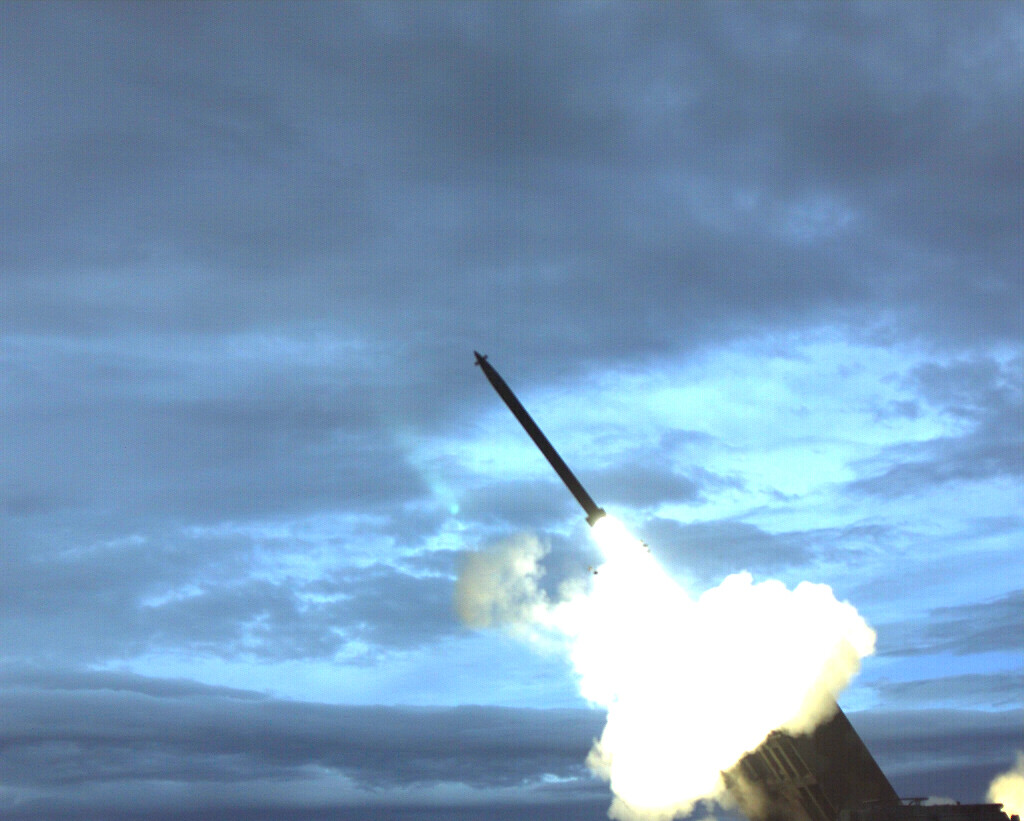G Systems developed a portable configurable production test station for testing a signal distribution box line replaceable unit (LRU) on the Guided Multiple Launch Rocket System (GMLRS) for the U.S. Army.
G Systems developed a portable configurable production test station for testing a signal distribution box line replaceable unit (LRU) on the Guided Multiple Launch Rocket System (GMLRS) for the U.S. Army.
Automate the signal testing of a Signal Distribution Box (SDB) under extreme environmental conditions for the Guided Multiple Launch Rocket System (GMLRS) for the U.S. Army. The test hardware/software platform must also control a Thermotron temperature chamber and a Thermotron vibration chamber.

Develop and build an automated production test system using LabVIEW ™ -based software, National Instruments (NI) PXI/SCXI switches and DMM, and Agilent Technologies oscilloscope, power supply and pulse generator.
The test system tests output signal quality for six (6) different signal channels while controlling a temperature chamber and shaker chamber. All data, including waveform images, are logged to file and acceptance/failure reports automatically generated.
The Guided Multiple Launch Rocket System (GMLRS) uses a GPS system to guide the rocket. As part of the initialization, the GPS receiver requires a precise one (1) pulse per second (PPS) electronic signal to calibrate its internal clock. The launch vehicle provides this electronic pulse. A signal distribution box (SDB) is used to distribute the electronic pulse to the six (6) rockets staged in the rocket launch pad.

Figure 1: SDB Test Station Composite
G Systems designed and built a portable test station to test the critical signal distribution box. The test station measures the signal pulse and also controls a temperature chamber and vibration shaker chamber. The SDBs are tested at high, low, and ambient temperatures after being vibrated in the shaker chamber at the high and low temperatures.
G Systems built the portable station on a National Instruments PXI/SCXI based test platform. Up to six (6) different SDB units can be tested without disconnecting or reconnecting the test cables.
The test system hardware concept is diagrammed in Figure 2.

Figure 2: Hardware Design Concept
An Agilent power supply is used to supply up to 35V. The NI PXI – 2530 multiplexer switch allows power to be distributed to any one of the six units under test (UUT). The Agilent 81101A pulse generator simulates the one (1) pulse per second signal from the launch vehicle. The SCXI – 1193 switch matrix alternately switches this signal pulse to the six units under test. An Agilent DSO6012A oscilloscope measures the pulse characteristics for each UUT. A PXI – 4060 Digital Multimeter (DMM) verifies that the power supply is functioning properly through out the system.
The test, control, and report automation software was written using National Instruments LabVIEW ™ 8.6 . The software accomplishes three key test functions:
Test parameters are fully user defined and configurable including, for instance, pulse amplitude, pulse width, pulse period, and maximum rise time, all configurable with user defined measurement tolerances.
The custom software control program allows the operator to automatically control the Thermotron temperature chamber to a predefined temperature test profile. The Thermotron vibration chamber can likewise be controlled automatically.
The software has several levels of complexity accessible through separate graphical user interfaces (GUIs). In the operator view, the GUIs provide basic operating instructions and pass/fail status. The engineering view allows complete system configuration including changing test limits and test parameters. Also while in engineering mode, the test station can be operated manually as well as automatically.
The software also includes a self-test routine which insures that all hardware is functioning properly and all connections are correct. An automated report generator completes the software functionality by building, data logging, filing, and printing production test results reports.
Production test times were reduced by a factor of 6, and operator labor was greatly reduced through the automation of the environmental chambers.

G Systems improved production test times by a factor of 6 by developing a new automated test platform. The new LRU test station automates the electrical test of the GMLRS Signal Distribution Box. The test station also automatically controls both the temperature and vibration chambers for environmental testing which greatly reduced test set-up time. Automated production reports are also generated providing a digital record of all test results.
The best way to begin is by having a conversation with a member of the G Systems teams about your test challenges and the options for helping you solve them.
Based near Dallas, Texas, G Systems is an internationally recognized systems integrator specializing in the modernization of complex systems of all sizes. We are experienced in the design, integration, assembly, production, and maintenance of custom turnkey solutions that support our customers at all phases of their product’s maturity cycle.
NAICS Codes: 541330, 541715, 541511, 334515, 335999, 334519
CAGE Code: 3HPP5
